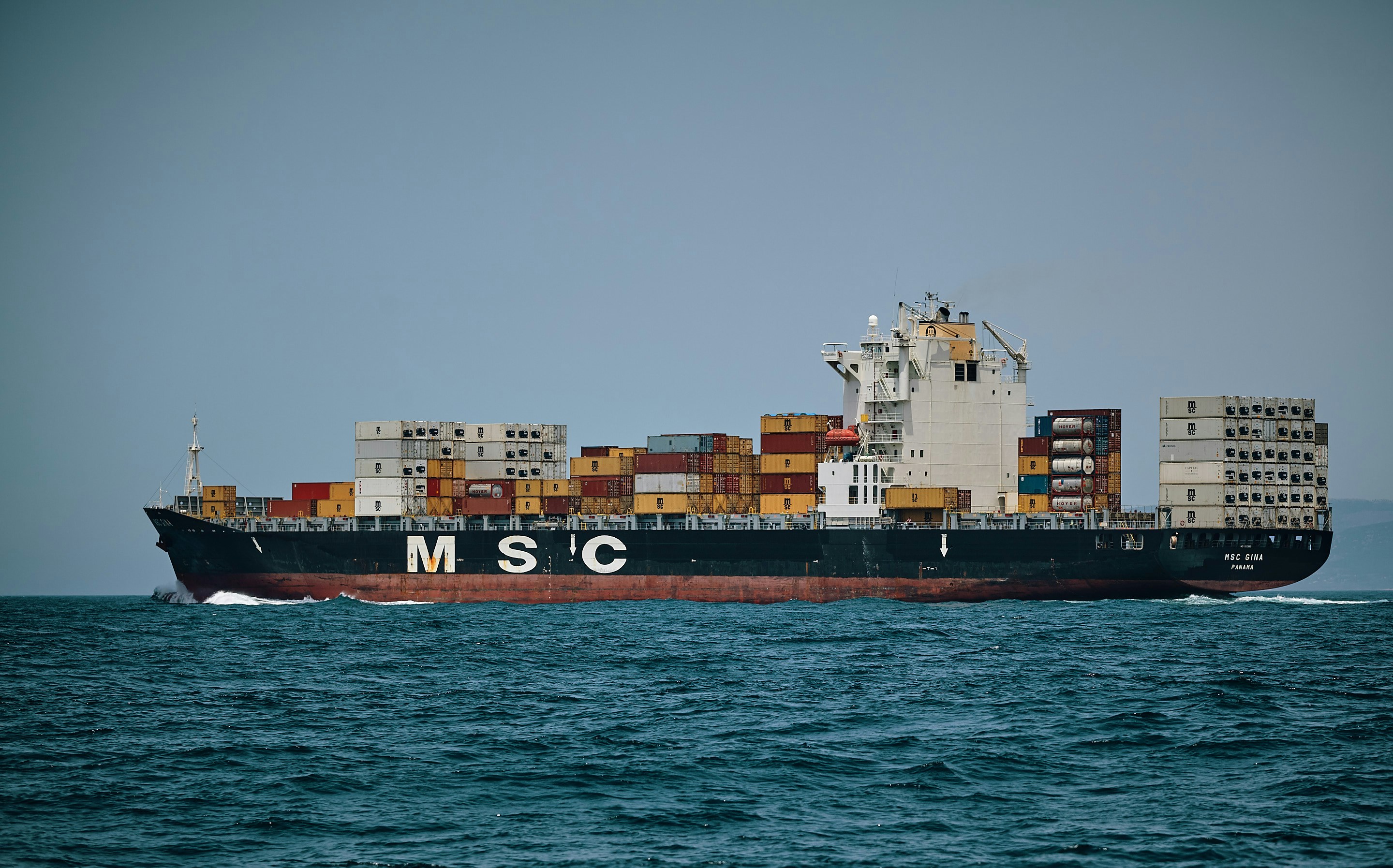Being able to quickly identify and track vessels is essential in global trade.
That’s where SCAC codes come in. These four-character alphanumeric codes help us instantly identify freight carriers and make managing the logistics process a lot easier.
In this article, you’ll learn what SCAC codes are, how they work, and why we use them. We’ll even include a list of well-known SCAC codes you can use to track your shipments.
What is a SCAC code?
The Standard Carrier Alpha Code (SCAC) is a unique four-character identifier assigned to transport companies operating in North America. They were established in the 1960s by the National Motor Freight Traffic Association (NMFTA).
SCAC codes make it easy to identify carriers and standardise processes across the industry. They are particularly useful in intermodal transport situations, where goods may be quickly changing from one carrier to the next. They also ensure consistency across documentation, reducing the risk of errors that can lead to delays.
How does the shipping industry use SCAC codes?
As an industry, we use SCAC codes in several ways. Here are some of the most common use cases:
- Freight tracking: SCAC codes let companies track shipments as they move from one side of the globe to the other, ensuring they are delivered on time and to the correct destination.
- Documentation: SCAC codes are required on a range of shipping documents, including bills of lading, freight invoices, and import/export manifests.
- Intermodal transportation: It can get confusing when companies use multiple modes of transport to move goods. SCAC codes provide a constant identifier that improves tracking and prevents logistical errors.
- Customs compliance: SCAC codes are an essential part of import/export documentation, particularly in the United States, where they are required to process shipments through customs and border control.
- Regulatory requirements: Certain industries, such as petroleum and pharmaceuticals, require SCAC codes to comply with federal regulations.
Who needs a SCAC code?
There are several entities in the shipping and logistics industry that require SCAC codes. Here are the main types of organisation:
- Freight carriers: Any transportation company operating in North America, including trucking companies, rail operators, and maritime carriers, must have a SCAC code.
- Intermodal transport operators: Companies that move freight across multiple modes of transportation need SCAC codes to ensure consistency.
- Government contractors: Businesses that provide logistics services to government agencies must use SCAC codes for tracking and compliance.
- FDA-regulated carriers: Companies transporting goods related to the Food and Drug Administration (FDA) must use SCAC codes to track shipments.
List of standard SCAC codes
Here are some examples of commonly used SCAC codes:
SCAC Code |
Carrier Name |
AACT |
AAA Cooper Transportation |
ABFS |
ABF Freight |
CMDU |
CMA CGM |
COSU |
China Ocean Shipping Lines |
EXLA |
Estes Express |
HLCU |
Hapag-Lloyd AG |
ODFL |
Old Dominion Freight Line |
UPSN |
United Parcel Service (UPS) |
USPS |
United States Postal Service |
These organisations include their SCAC codes on shipping documentation to identify who is responsible for transporting goods at each journey stage.
Benefits of SCAC codes for shippers
So, what do SCAC codes mean for suppliers? We’ll, there are several advantages to you knowing what they are and how they work:
- Better documentation: Including SCAC codes in shipping documents, such as bills of lading and freight invoices, reduces errors and ensures regulatory compliance.
- More supply chain visibility: Suppliers can use SCAC codes to track shipments in real time, enabling better inventory management and delivery forecasting.
- Efficient carrier selection: By identifying carriers through their SCAC codes, suppliers can evaluate and choose the most suitable options for their shipping needs.
- Stronger carrier relationships: Familiarity with a carrier’s SCAC code can help suppliers establish stronger partnerships by improving communication and coordination.
- Compliance assurance: SCAC codes simplify adherence to industry-specific regulations, ensuring that goods move smoothly through the supply chain.
Can you track shipments with a SCAC code?
SCAC codes play an important role in tracking shipments. By combining a carrier’s SCAC code with other identifiers, such as a bill of lading or tracking number, businesses can monitor their shipments throughout the transportation process. This real-time visibility helps you address potential issues in a proactive manner, ensuring goods arrive on time and in good condition.
Here’s an example of how SCAC codes can be used for tracking by freight companies and suppliers:
- Freight companies use SCAC codes to integrate tracking systems across multiple transportation modes.
- Suppliers and customers use SCAC codes to receive accurate updates on the location and status of shipments.
Move beyond SCAC codes with Pro Carrier
SCAC codes are an important part of the shipping industry. They provide consistency across documentation and are one of the major ways freight forwarders and importers can track their shipments.
But they aren’t the only way.
At Pro Carrier we prize supply chain visibility above everything except for customer service excellence. That’s why we built Horizon, our all-in-one supply chain solution. Horizon makes it easy to track your shipment across the globe, regardless of whether you're shipping from the Far East to the USA or moving goods between Europe and the UK.
Use Horizon’s Control Tower to follow your shipment with real-time GPS data and live updates at every checkpoint. Horizon’s dashboard shows your shipment’s status, estimated time of delivery, route, references and much more.
Speak to an expert today to learn more about how Horizon can increase your supply chain visibility.
